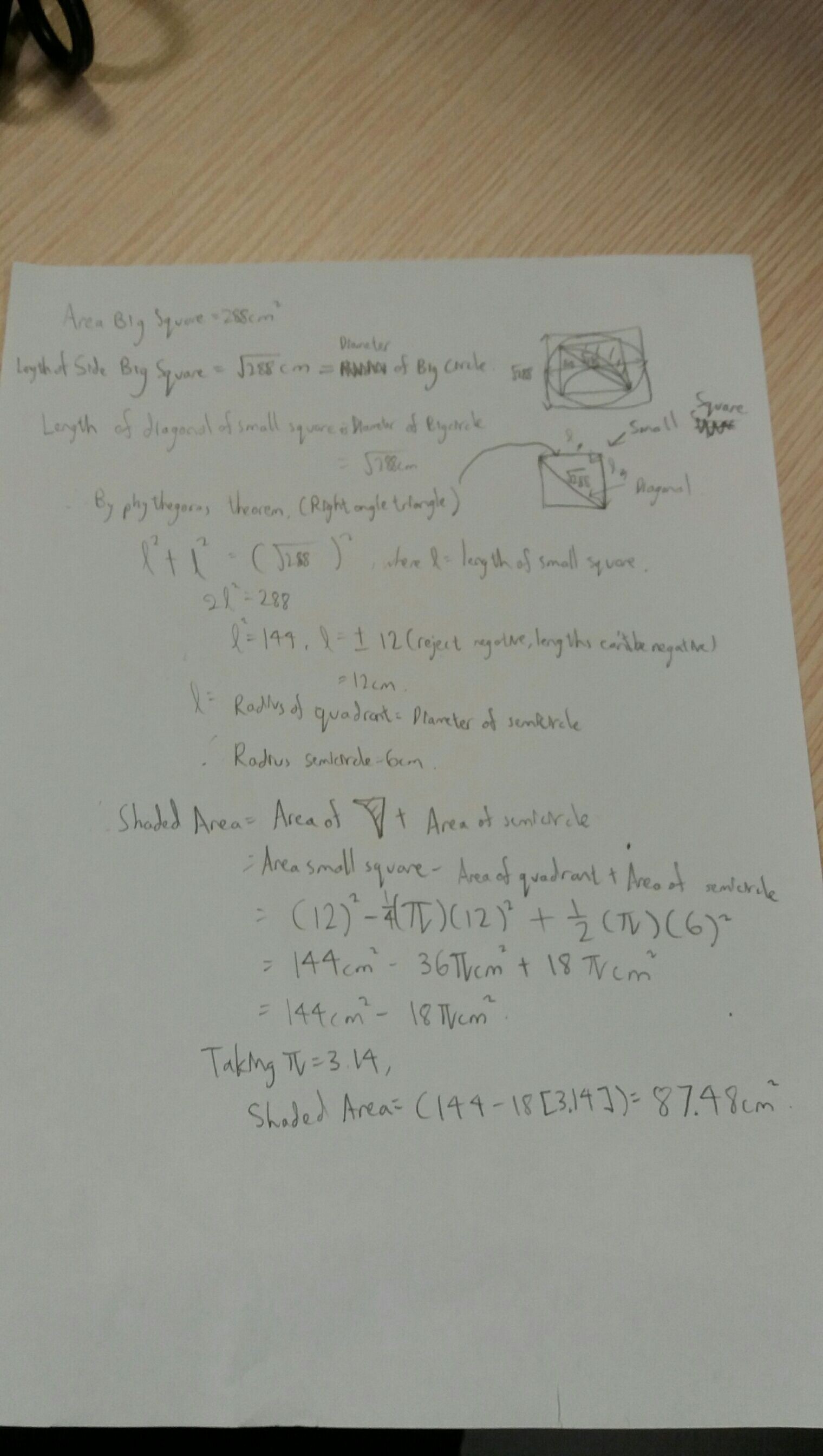Joel Ng's answer to Venessa's Primary 6 Maths question.
done
{{ upvoteCount }} Upvotes
clear
{{ downvoteCount * -1 }} Downvotes
Firstly, even though the length of the big square is root 288cm^2, it is still solvable as this is the right path to go. Using this length of square, we realise that the length of the big square is equal to the diameter of the big circle and the diagonal of the small square, based on how each shape touches each other. Through phythegoras theorem, we can find the length of the small square to be equal to 12cm, which is further equal to the radius of the quadrant and diameter of the semicircle. With the radiuses known, we can find out the shaded area which is the sum of the area of the area of the small square and semicircle minus the area of the quadrant. Hope this helps and feel free to clarify (my working is quite messy)
Date Posted:
6 years ago
Thank you so much



